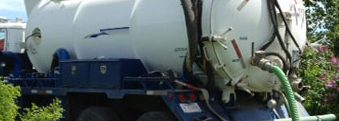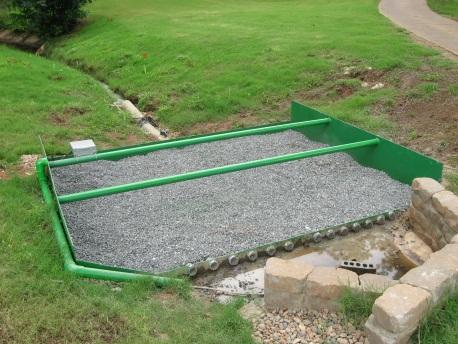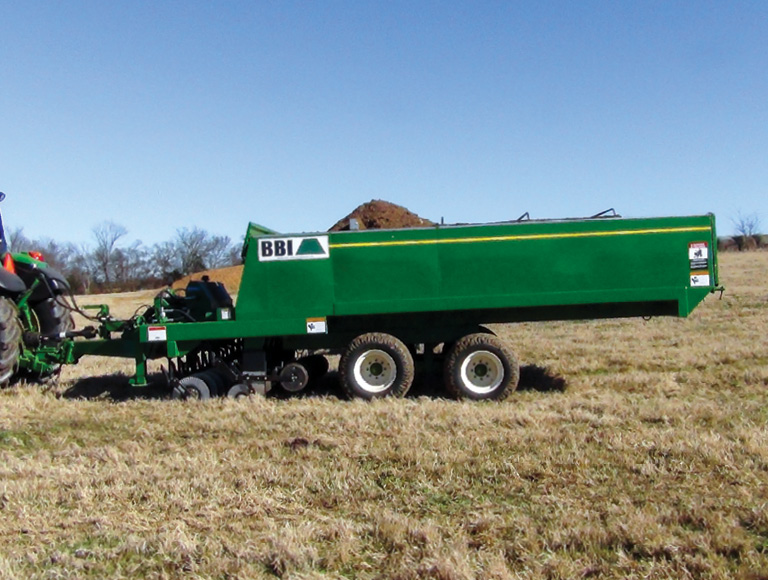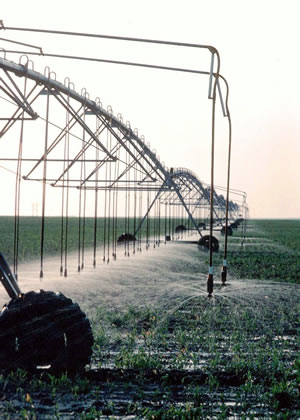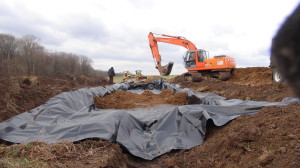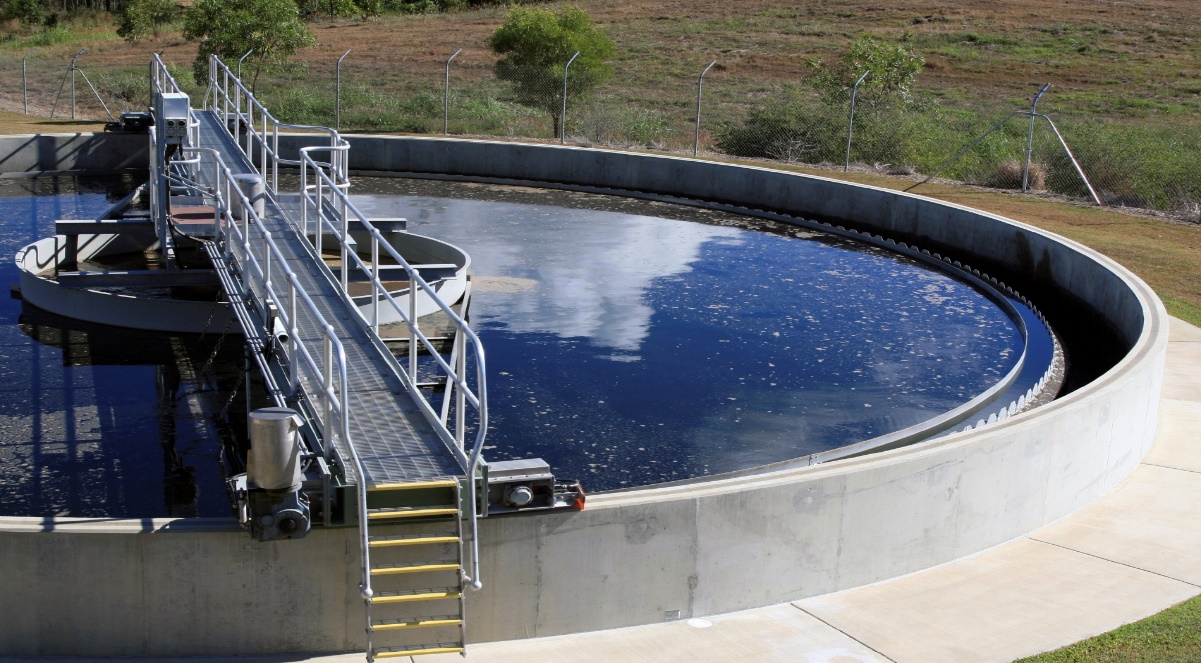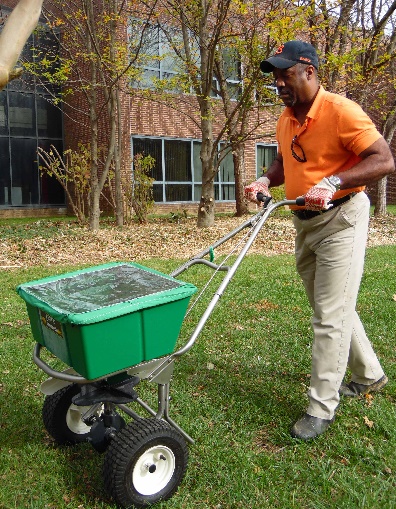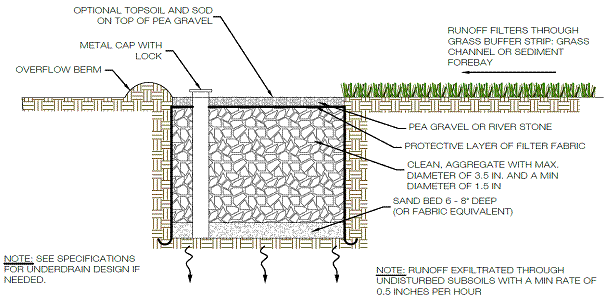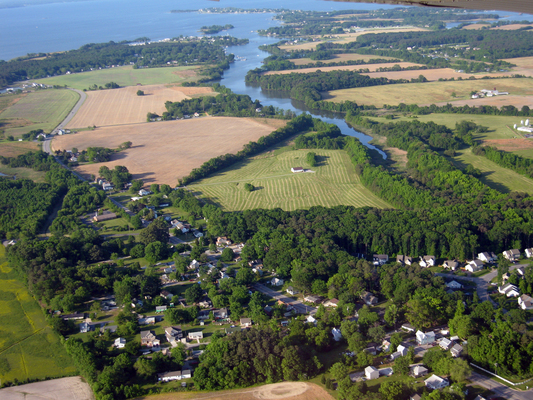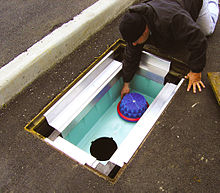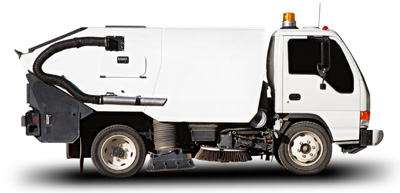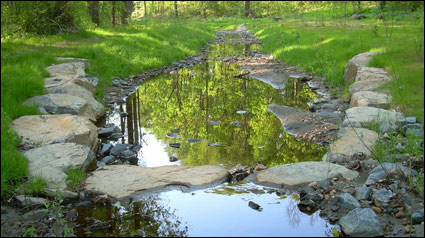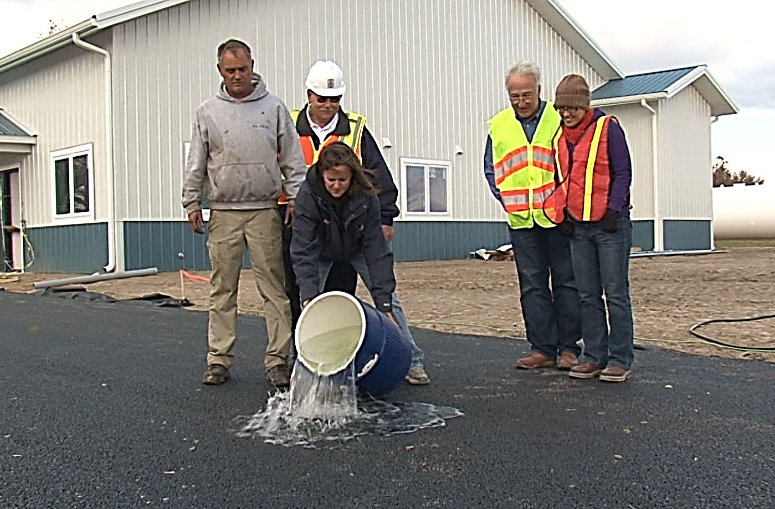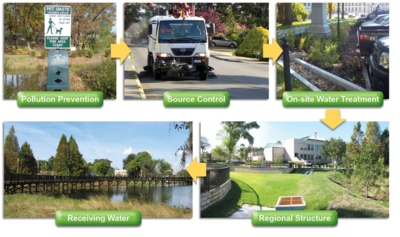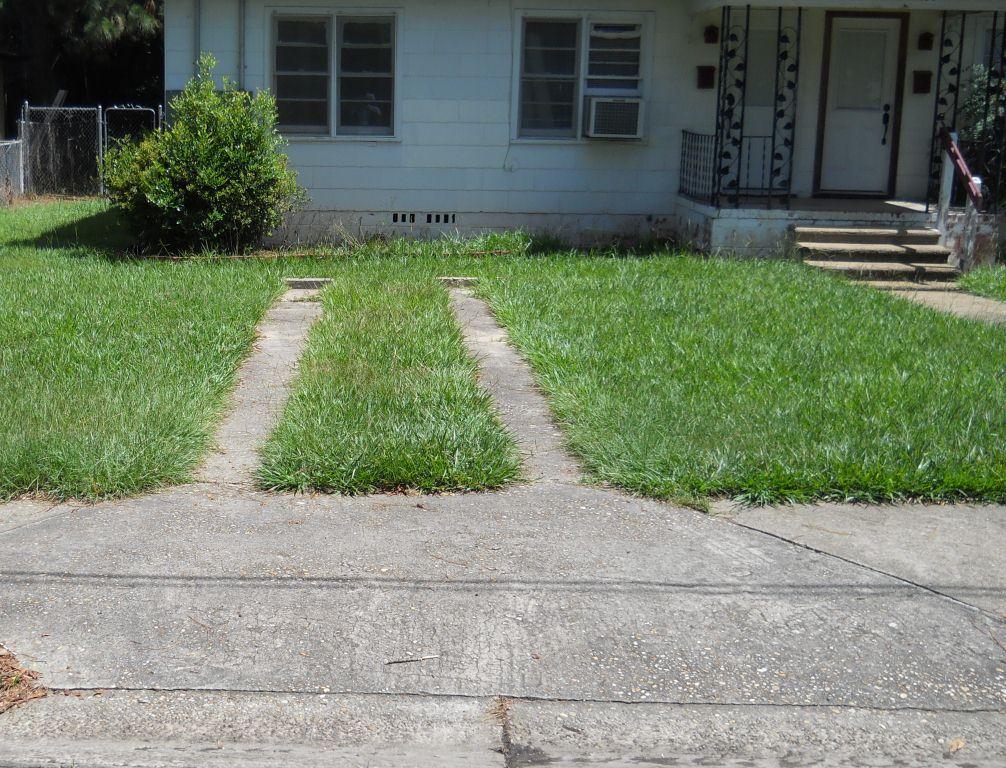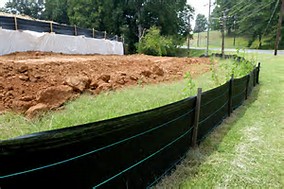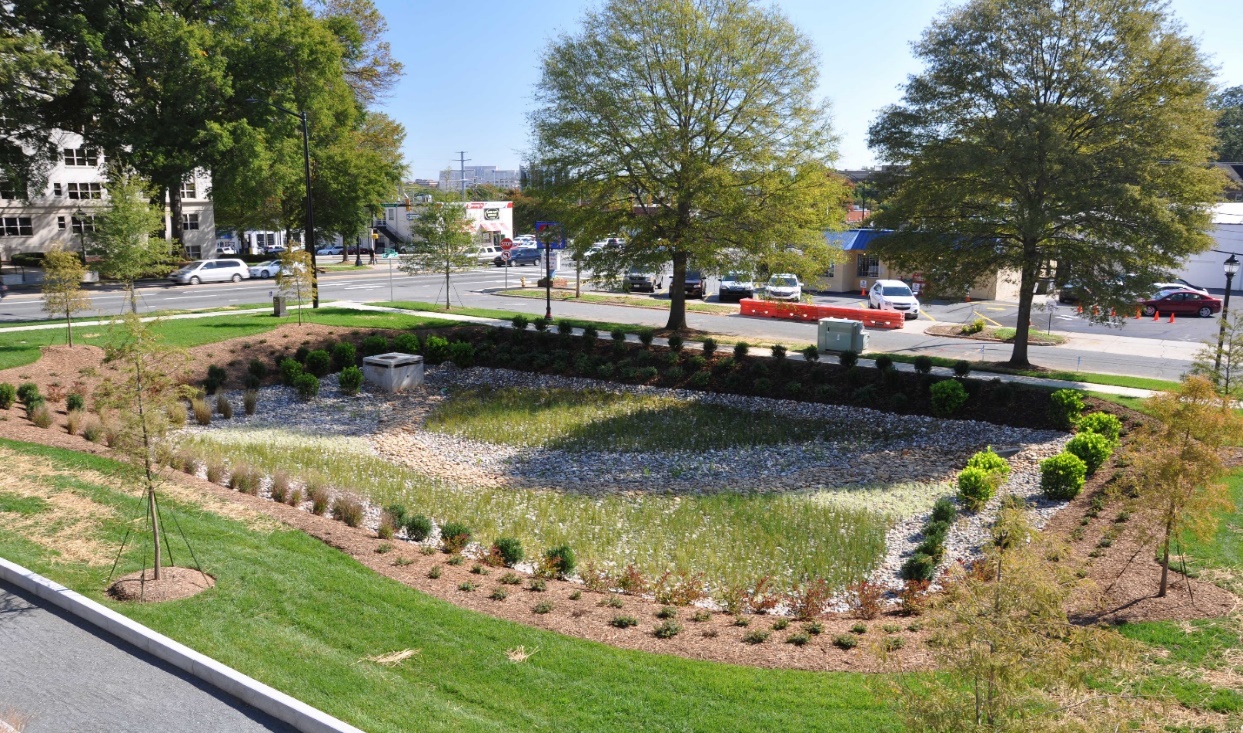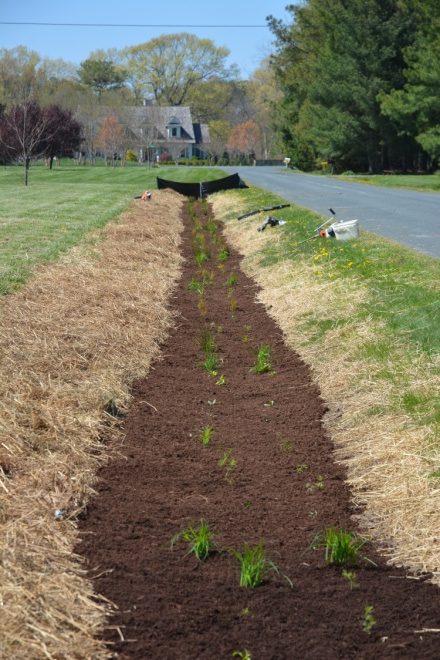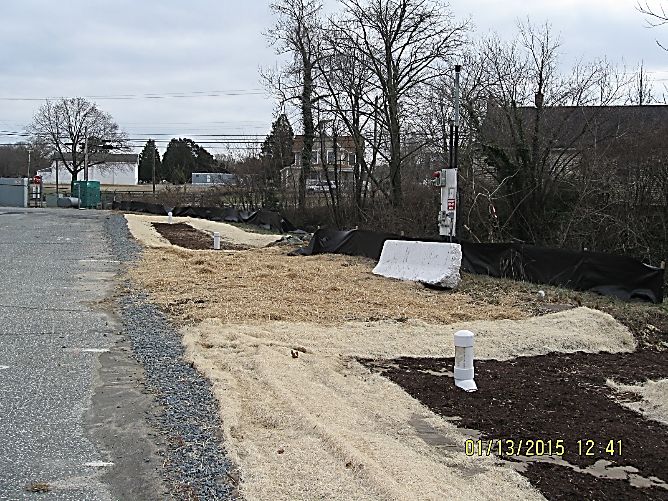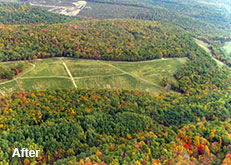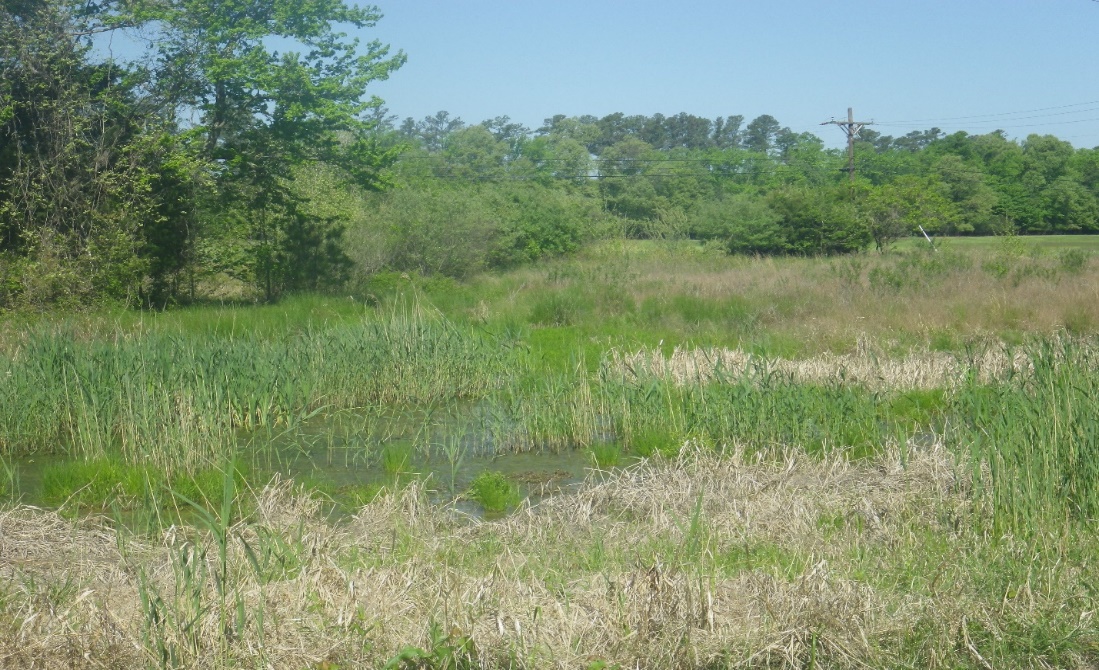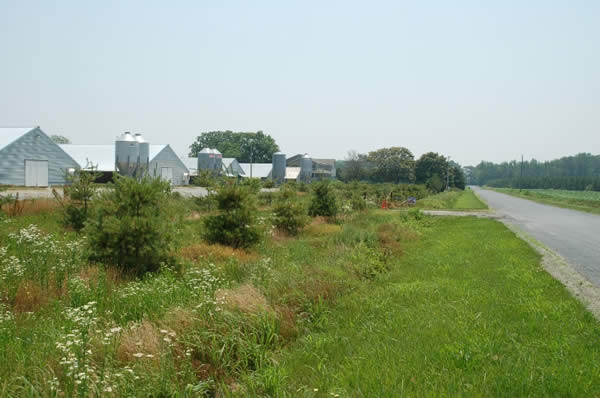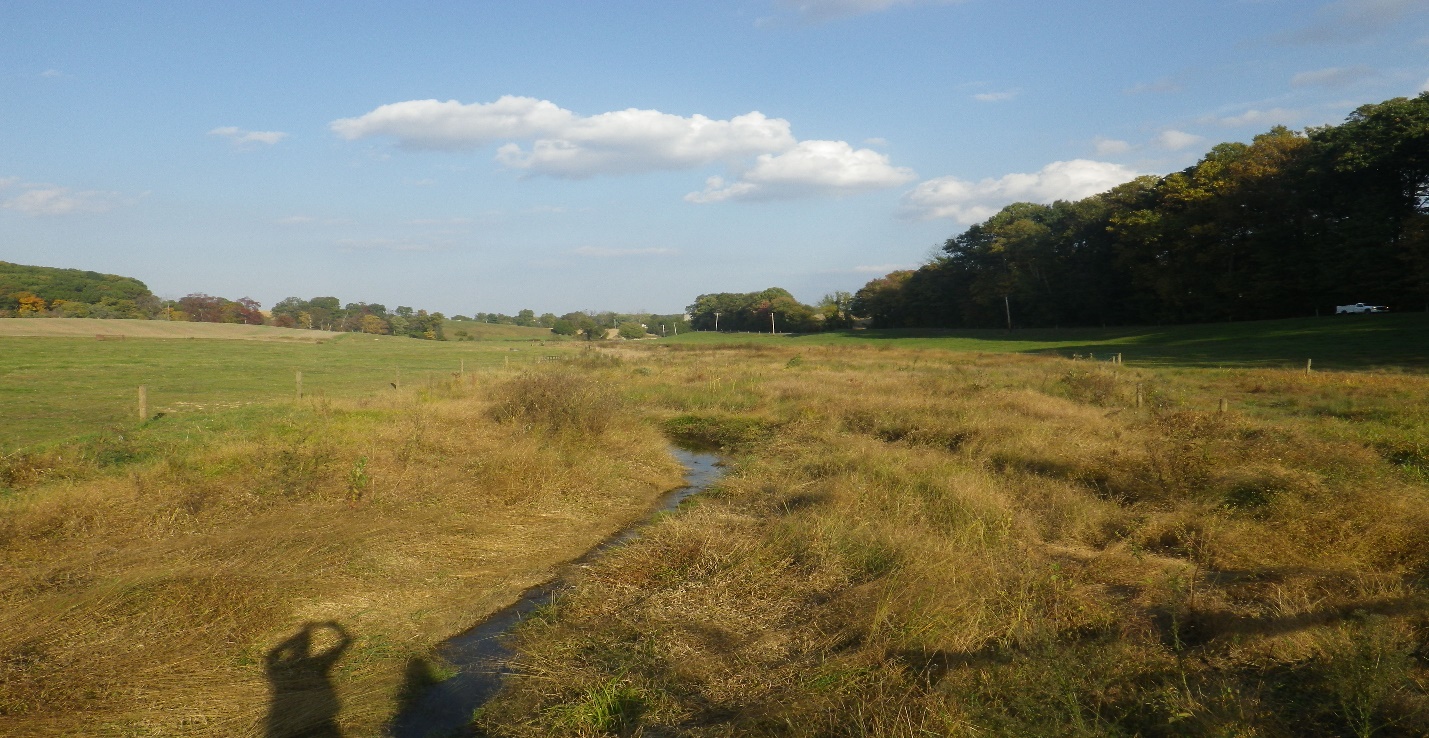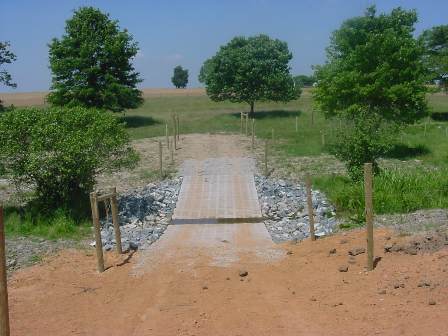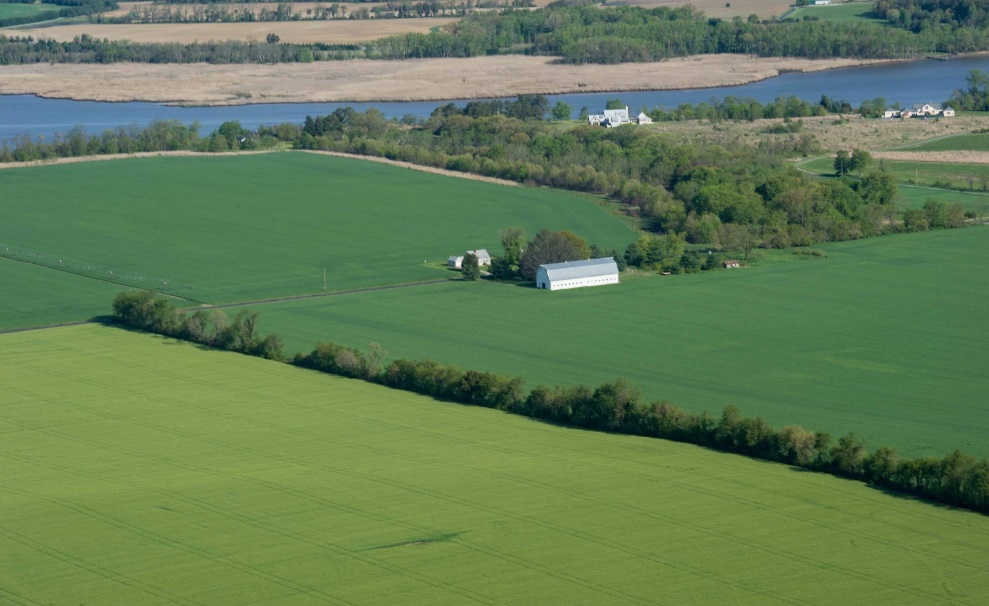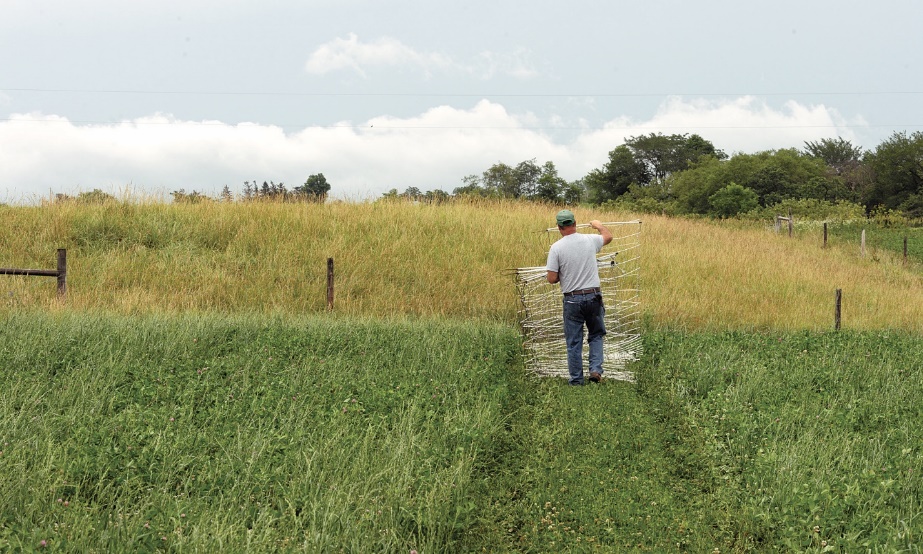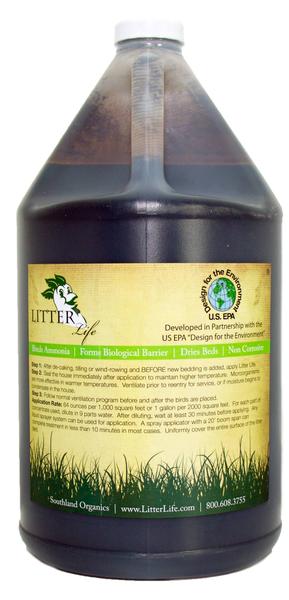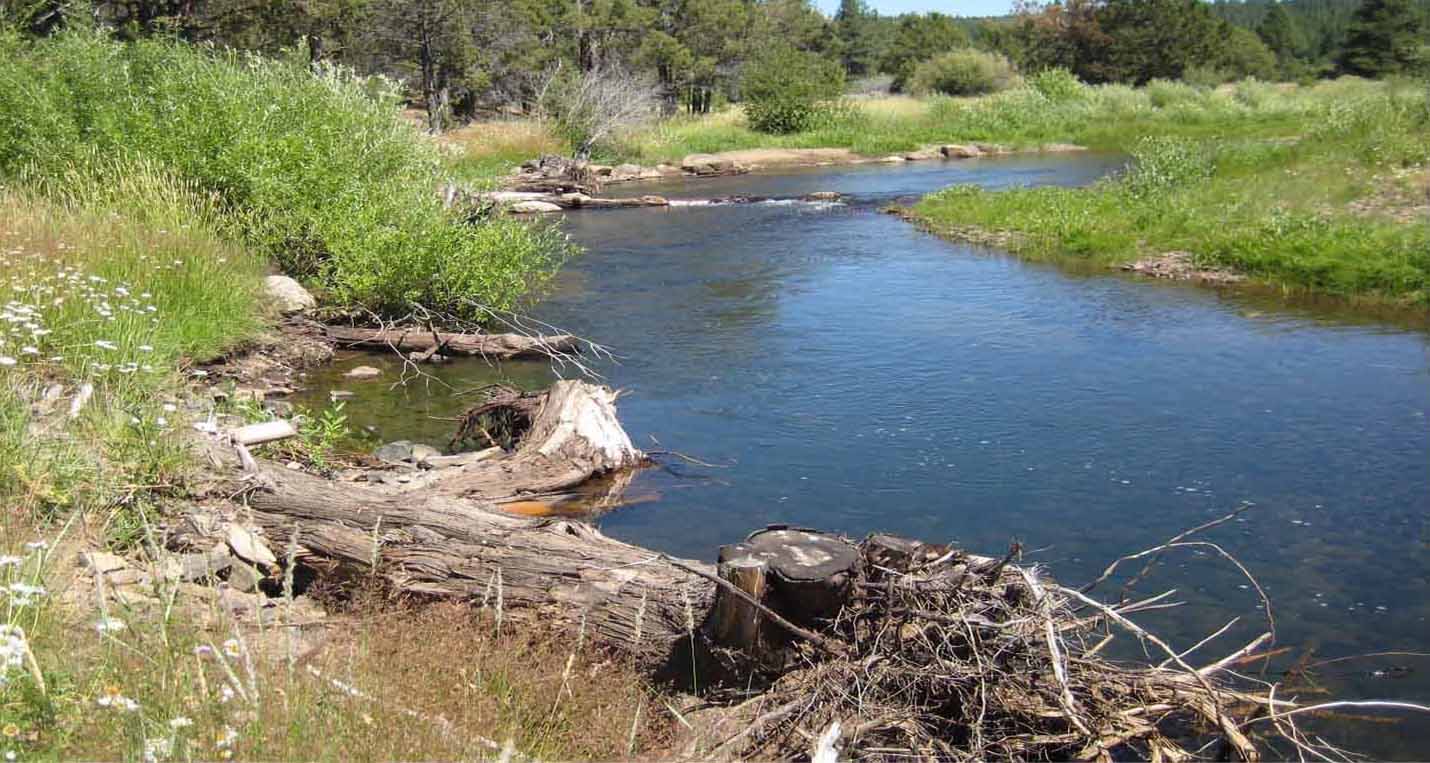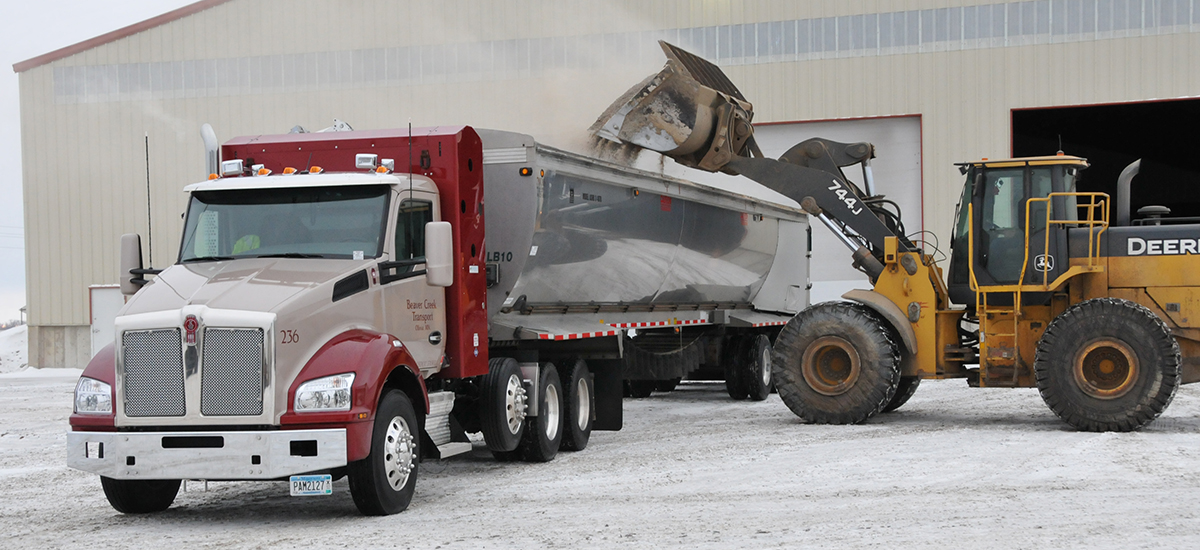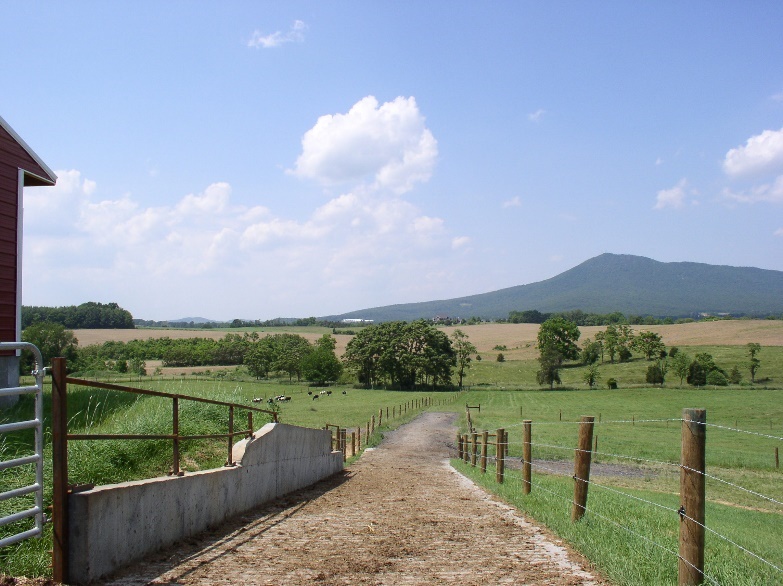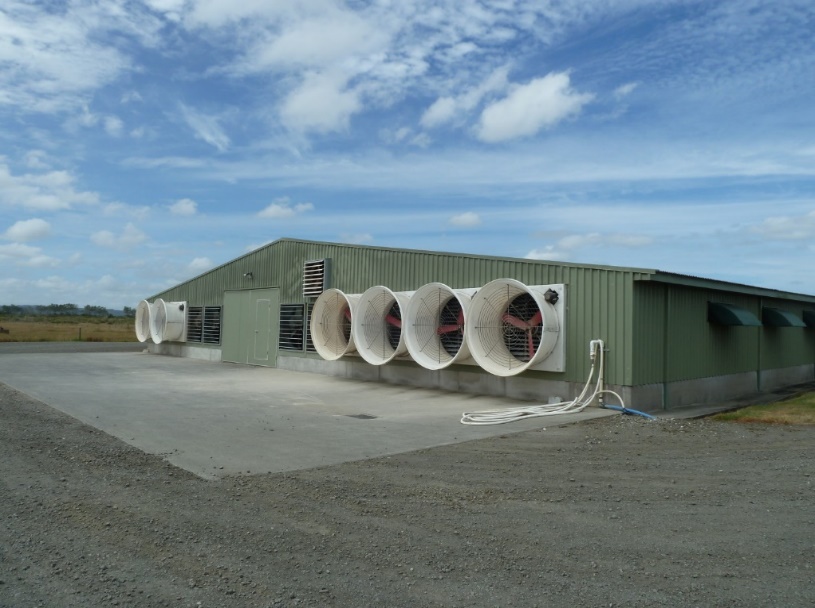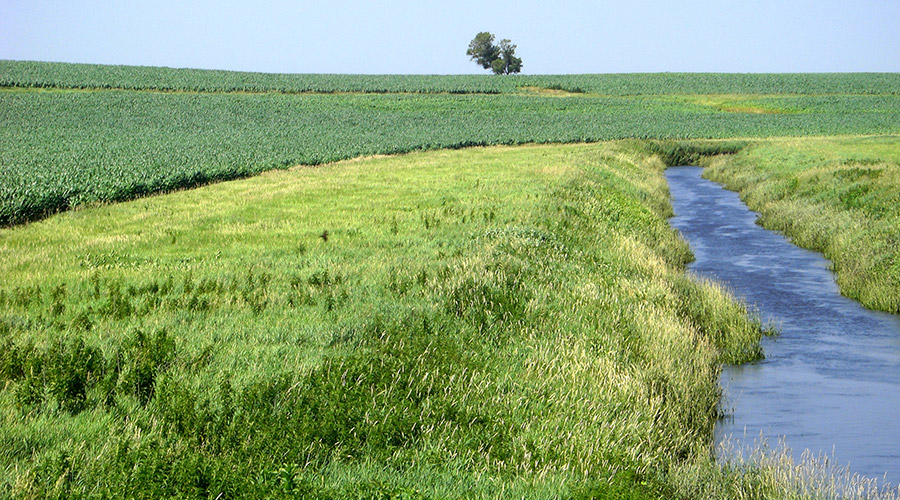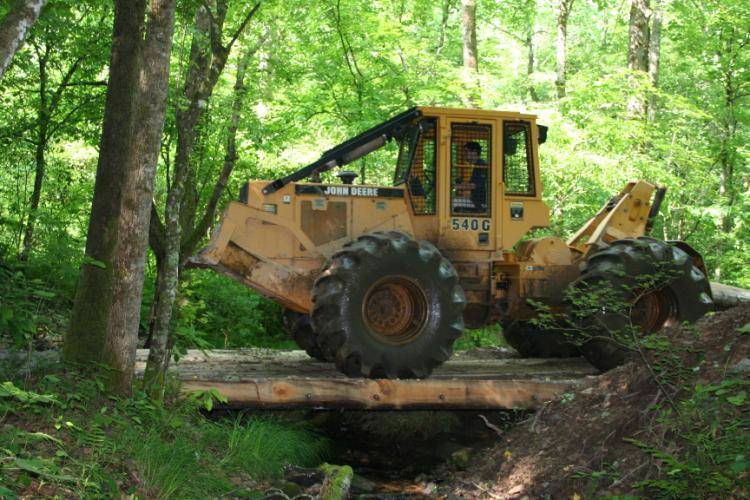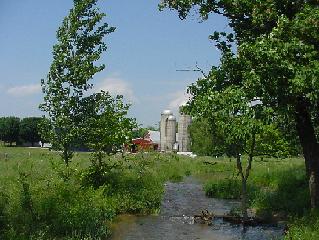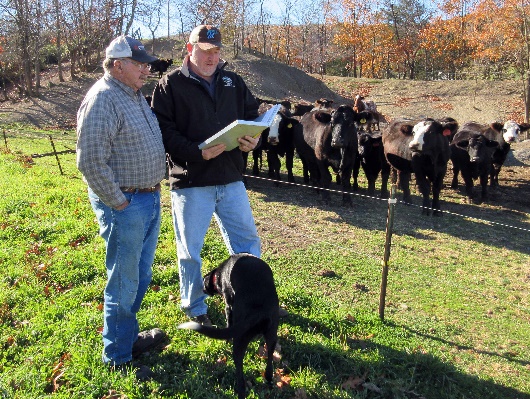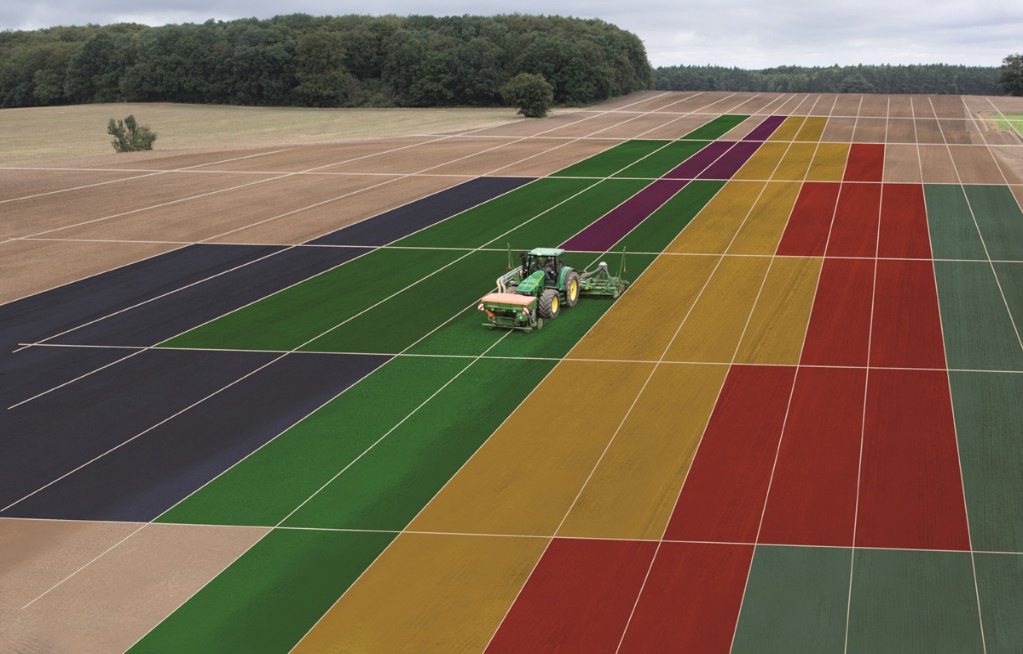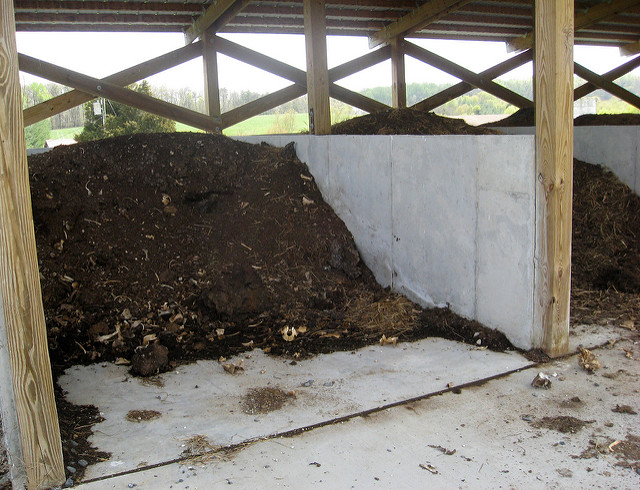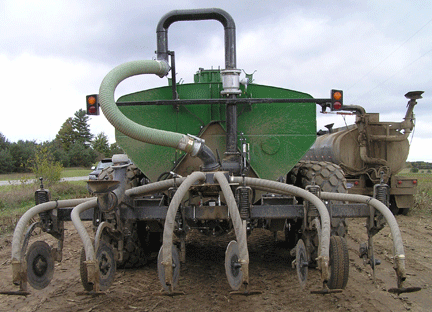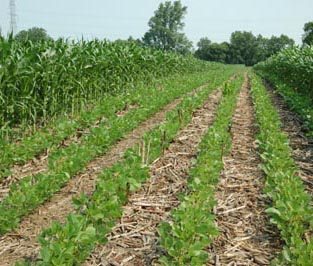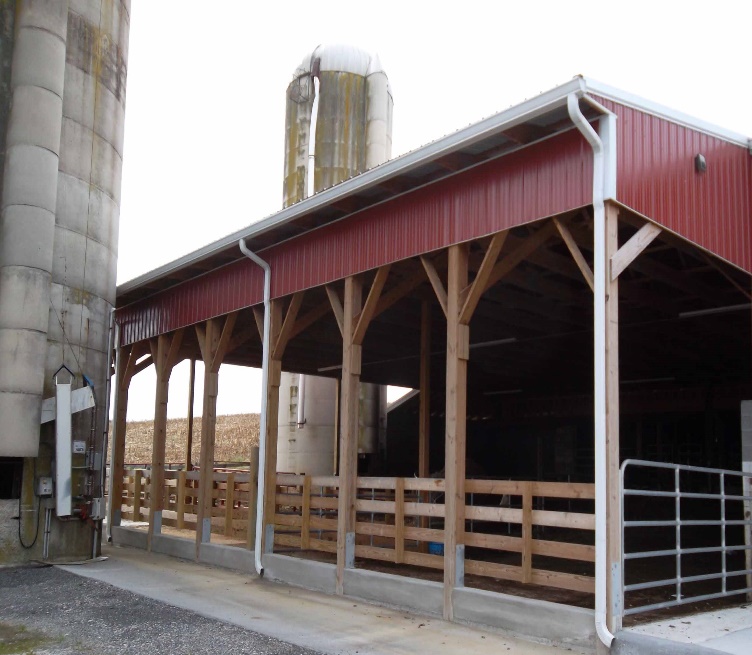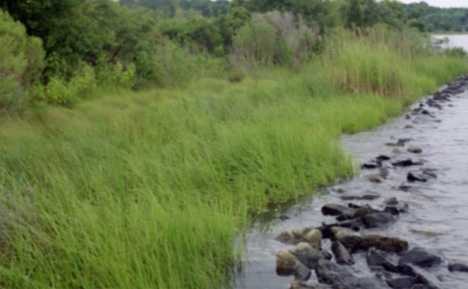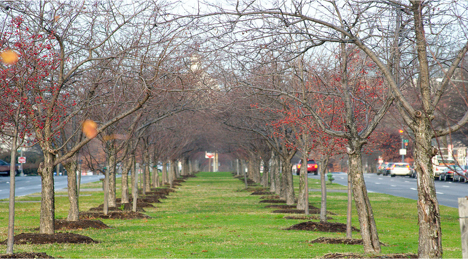Nitrogen
Average Total Nitrogen removed per linear foot of practice per year.
Phosphorus
Average Total Phosphorous removed per linear foot of practice per year.
Best Management Practices Search
Denitrification (Best Available Technology Systems)
This practice introduces air into a three-chambered septic
Read moreConnections to Sewer
Traditional sewer systems connect residential homes directly to a sewer line that conveys waste to the local wastewater treatment plant (WWTP). This is most common in
Read morePhosphorus-sorbing Materials in Ag Ditches (PSMs)
The University of Maryland Eastern Shore and the U.S. Department of Agriculture’s Agricultural Research Service (ARS) have demonstrated through an existing
Read morePoultry Litter Injection
Subsurface injection of dry litter is an environmentally friendly method of using an abundant, nutrient-rich resource with minimum soil
Read moreCropland Irrigation Management
This practice primarily controls the volume and frequency of irrigation water applied to crops, to meet crop needs while conserving water
Read moreBioreactors
A woodchip bioreactor consists of a trench of varying depth and width, depending on local conditions, filled with woodchips. The water level is controlled to cover the
Read moreWet Ponds and Wetlands
A water impoundment structure that intercepts stormwater runoff then releases it to an open water system at a specified flow rate. These structures retain a permanent
Read moreVegetated Open Channels
Open channels are practices that convey stormwater runoff and provide treatment as the water is conveyed, this practice is very like a bioswale. This BMP has no
Read moreUrban Nutrient Management
Urban nutrient management involves the reduction of fertilizer to grass lawns and other urban areas. This does not account for the recent laws passed to remove
Read moreUrban Infiltration Practices (without sand/vegetation and no underdrain)
A depression to form an infiltration basin where sediment is trapped and water infiltrates the soil. No underdrains are associated with infiltration basins and trenches,
Read moreUrban Infiltration Practices (with sand/vegetation and no underdrain)
A depression to form an infiltration basin where sediment is trapped and water infiltrates the soil. No underdrains are associated with infiltration basins and trenches,
Read moreUrban Forest Buffer
An area of trees at least 35 feet wide on at least one side of a stream, usually accompanied by trees, shrubs, and other vegetation that is adjacent to a body of
Read moreUrban Filtering Practices
Practices that capture and temporarily store runoff and pass it through a filter bed of either sand or an organic media. There are various sand filter designs, such as
Read moreStreet Sweeping
Sweeping of curbed streets and parking lots conducted on a twice monthly basis. The same street must be swept 25 times a
Read moreUrban Stream Restoration, Living Shoreline, Regenerative Stomwater Conveyance (RSC)
Stream restoration is a set of activities that help improve the environmental health of a river, creek or stream. These activities aim to restore the natural
Read morePermeable Pavement
The most commonly used permeable pavement surfaces are pervious concrete, porous asphalt and permeable interlocking concrete pavers. Other options include plastic and
Read moreMS4 Permit Stormwater Retrofit
MS4 (Municipal Separate Storm Sewer System) general permits (located on the Eastern Shore in Elkton and Salisbury) may require the retrofitting of existing unmanaged
Read moreImpervious Urban Surface Reduction
Surfaces covered by impenetrable materials such as asphalt, compacted gravel, concrete, brick, and stone are impermeable. These impermeable materials seal surfaces,
Read moreForest Conservation
Acres of existing forest that are placed under long-term agreement (easement or deed restriction) to remain in forest land use, attributable to Forest Conservation Act
Read moreErosion and Sediment Control
Soil management systems and erosion control measures, consisting of combinations of cover and structural practices are typically implemented to protect soil and prevent
Read moreDry Extended Detention Ponds
Dry extended detention basins are depressions created by excavation or berm construction that temporarily store runoff and release it slowly via surface flow or
Read moreDry Detention Ponds and Hydrodynamic Structures
Dry detention ponds are depressions or basins created by excavation or berm construction. Dry detention ponds are designed
Read moreBioretention/Rain Gardens
Bioretention facilities (cells, swales or planters) are engineered to treat and infiltrate a specific amount of stormwater. They have exact design criteria to ensure
Read moreAbandoned Mine Reclamation
The Abandoned Mine Lands Division of the Mining Program performs reclamation of abandoned (pre-1977 mining law) coal mines, land and remediation of acid mine
Read moreWetland Restoration
Wetland restoration refers to the reestablishment of wetlands on sites where they used to exist. Local WIP goals may involve more than just restoration, however, as they
Read moreWater Control Structure
A Water Control Structure is a device placed within a water management system or drainage channel that conveys water, controls the direction or rate of flow, maintains a
Read moreTree Planting/Vegetative Environmental Buffers – Poultry
Properly positioned trees and shrubs, as well as other structures that disrupt air flow around the farm, provide the opportunity to reduce dust leaving the site and
Read moreStream Protection with Fencing
Stream protection with fencing involves excluding a strip of land with along the stream corridor to exclude livestock. The implementation of stream fencing should
Read moreStream Access Control with Fencing (Livestock Stream Crossing)
The implementation of stream fencing provides stream access control for livestock but does not necessarily exclude animals from entering the stream by incorporating
Read moreSoil Conservation and Water Quality Plan (SCWQP)
A comprehensive plan that addresses natural resource management on agricultural lands and utilizes best management practices that control erosion and sediment loss and
Read morePrescribed Grazing (PG)
Prescribed grazing is the application of domestic livestock grazing at a specified season and intensity to accomplish specific vegetation management
Read morePrecision Intensive Rotational Grazing (PIRG)
Rotational grazing is the practice of moving grazing livestock between pastures (often called paddocks) as needed or on a regular basis. There are many approaches and
Read morePoultry Phytase
Poultry diets are made up primarily of plant seeds — usually corn and soybeans. Corn and soybean meal comprise as much as 80 percent of poultry diets. However, much of
Read morePoultry Litter Treatment
A surface application of alum (aluminum sulfate), an acidifier, is added to poultry litter to acidify and maintain ammonia in the non-volatile ionized form (ammonium).
Read moreOff-Stream Watering Facilities
Alternative watering facilities typically involve the use of permanent or portable livestock water troughs placed away from the stream corridor. The source of water
Read moreNutrient Management
A nutrient management plan is used to determine how much fertilizer, manure or other nutrient sources may be safely applied to crops to achieve yields and prevent excess
Read moreNon-Urban Stream Restoration
Steam Restoration is a set of activities that help improve the environmental health of a river, creek or
Read moreManure Transport
Poultry and livestock producers transport manure off their farms as part of an animal waste management system and nutrient management plan.
Read moreLoafing Lot Management
The stabilization of areas frequently and intensively used by people, animals or vehicles by establishing vegetative cover, surfacing with suitable materials, and/or
Read moreIrrigation Water Capture Reuse
Water reuse can be defined as the use of reclaimed water for a direct beneficial purpose. This practice involves the collection of runoff water from container nursery
Read moreHorse Pasture Management
Stabilizing overused small pasture containment areas (animal concentration area) adjacent to animal shelters or
Read moreHeavy Use Area (HUA) – Concrete Pads for Poultry and Livestock
Stabilization to protect an area on a farm that is being utilized frequently and intensively by livestock or farm equipment
Read moreGrass Buffers (Vegetated Open Channel)
Grass buffers are linear strips of maintained grass or other nonwoody vegetation between the edge of fields and streams, rivers or tidal waters or between/within fields
Read moreForest Harvest Practices
A set of preventative measures that help control soil erosion resulting from human disturbance. These simple and inexpensive practices have become widely used to divert
Read moreForest Buffers (Riparian Buffers)
Riparian forest buffers are linear wooded areas along rivers and streams that help filter nutrients, sediments and other pollutants from runoff and remove nutrients from
Read moreEnhanced Nutrient Management
Based on research, the nutrient management rates of nitrogen application are typically set approximately 35 percent higher than what a crop needs to ensure nitrogen
Read moreDecision/Precision Agriculture
This practice is a management system that is information and technology based, is site specific and uses one or more of the following sources of data: soils, crops,
Read moreMortality Composter (Animal Mortality Facility)
A roofed structure designed for composting the normal daily accumulation of dead birds from a poultry
Read moreDairy Manure Injection/Incorporation
Direct injection incorporates manure beneath the soil surface and thus minimizes odor and ammonia emissions during application. Two of the most common types of direct
Read moreCover Crops (standard drilled wheat)
Cereal grains such as wheat, rye or barley, brassicas (plants in the cabbage family), or legumes such as clover that grow in cool weather are planted as cover crops in
Read moreConservation Tillage (Total Acres)
Conservation Tillage involves planting and growing crops with minimal disturbance of the surface
Read moreBarnyard Runoff Control (Roof Runoff Structures)
Gutters, downspouts and other water conveyance devices are constructed to prevent roof runoff water from causing severe erosion or mixing with animal waste and
Read moreAnimal Waste Management System Livestock/Poultry
Lagoons, ponds or steel or concrete tanks are common structures used for the storage of liquid wastes while storage sheds or pits are used to store solid wastes. For
Read moreShoreline Erosion Control
Structural shoreline erosion controls are designed to protect eroding shorelines by armoring the shoreline to dissipate incoming wave energy while protecting
Read moreDirt and Gravel Road Erosion and Sediment Control
Driving surface aggregate (DSA) is a well-graded, unbound mixture of material designed for use as a wearing course on unpaved
Read moreUrban Tree Planting/Urban Tree Canopy
Urban tree planting involves planting trees on urban pervious areas at a rate that would produce a forest-like condition over time. The intent of the planting is to
Read more